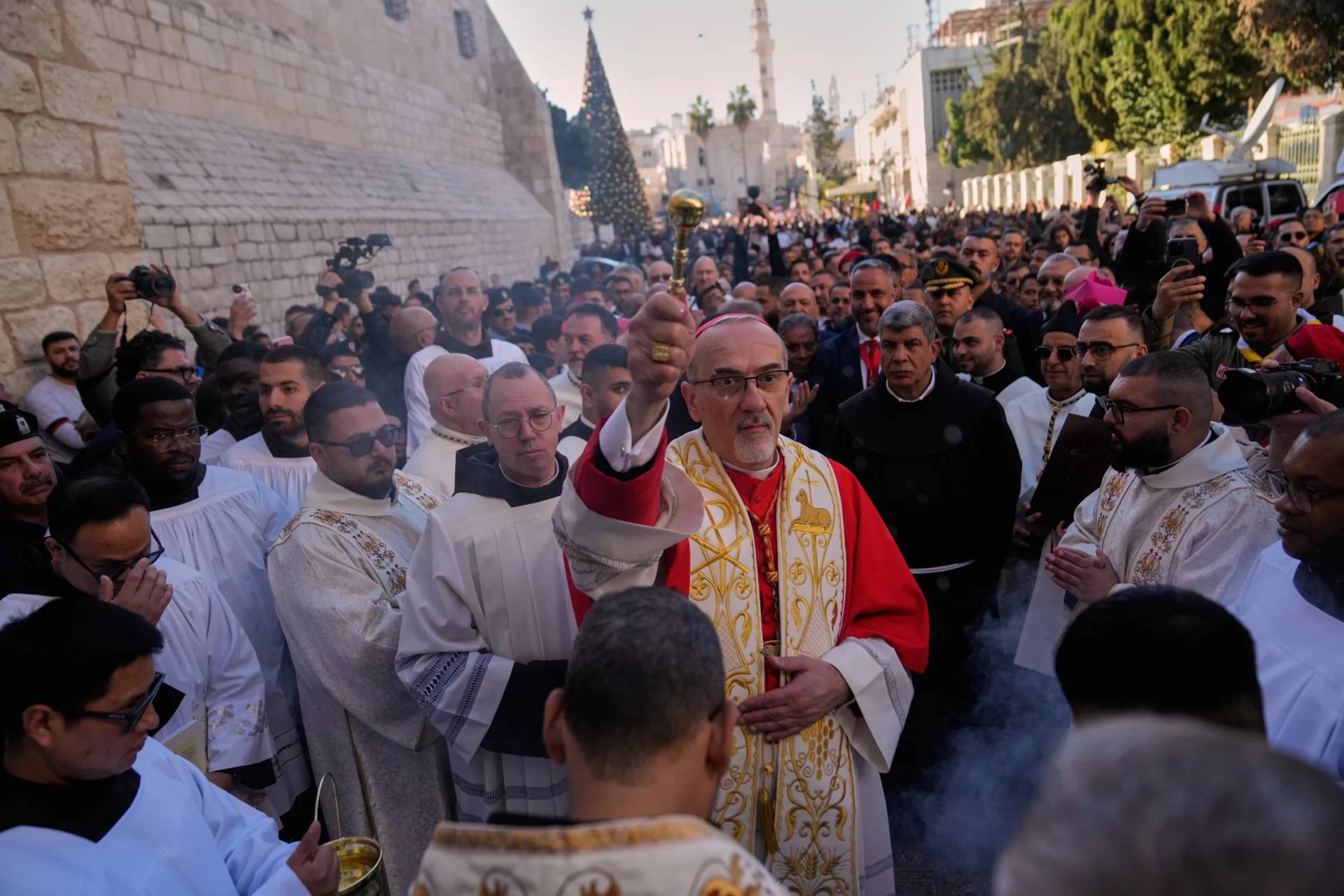HARTFORD, Connecticut — At the dedication of the reconstructed Cathedral of St. Joseph in 1962, a Catholic dignitary extolled monumental churches as “an expression of that awe and reverence which belongs to the majesty of God.”
“Particular circumstances may justify, at times, a simple, functional church or one of modest proportions,” Cincinnati Archbishop Karl J. Alter said. “But a cathedral church is something else. Religion still needs the inspiration of grandeur and beauty.”
Now, 56 years after the concrete cathedral rose on the ashes of the Gothic original, another revival is underway. Scaffolding surrounds the 300-foot-tall “mother church” of the Hartford Archdiocese as workers repair stonework, clean the exterior and ready the stainless steel cross atop the steeple for illumination.
To be finished by the end of the year, the first phase of the renovation is part of a capital campaign called “Forward With Faith” that coincides with the 175th anniversary of the archdiocese. The master plan for the Farmington Avenue cathedral also includes repairs to the front plaza; creation of a Cathedral Square with pedestrian mall, park and public gardens; and renovations to the lower level to include educational and community meeting facilities, a dining area and mausoleum.
The first phase, however, was a priority because the limestone exterior was crumbling in places, Paul Connery, director of property and assets for the archdiocese, said.
“Part of it was a safety issue because pieces were falling on the plaza,” Connery said.
The $2.2 million for the project comes from the 2016 Hartford Bishops’ Foundation Gala and from donations by the Knights of Columbus and private gifts, Archdiocese spokeswoman Maria Zone said. The ongoing repairs and planned renovations are meant to serve the “active, vibrant parish” centered at the cathedral and all the approximately 530,000 Catholics in 128 parishes across Hartford, Litchfield and New Haven counties, the cathedral’s rector, Monsignor Thomas Ginty, said.
During Colonial times and through much of the state’s early history, the Congregational Church was dominant in Connecticut and even other Protestant churches had a rough time gaining footholds. Beginning in the mid-19th century, however, the once tiny Roman Catholic population ballooned with the arrival of Irish people fleeing starvation. Catholics from throughout Europe followed, and the original Cathedral of St. Joseph was consecrated in 1892.
The architect was an Irishman, Patrick Keely, a prolific designer of city churches, including Asylum Hill Congregational. Built in the early Gothic style, the brownstone cathedral’s twin towers rose 150 feet. The inlaid ceiling was crafted with wood from every country in the world and the rotunda was covered with $100,000 worth of gold leaf. The cathedral was further adorned with a three-story-high altar of marble, 72 stained glass windows, a carved oak bishop’s throne, paintings and statuary.
Cathedral builders had always strived to reach for the glory of God in their art. The effect was meant to fill parishioners with a sense of wonder and God’s triumph. With the advent of the pointed arch, ribbed vault and outside supports called flying buttresses, churches could be built higher than ever and filled with more light. Between 1170 and 1270 in France, more than 500 great Gothic churches were built. Many of those stand today.
After the 1956 fire, the cause of which remains undetermined, Catholic leaders in Hartford sought to retain the height and breadth of a medieval cathedral in the rebuilt St. Joseph, but without all the ornamentation — certainly without the flammability. Combustibles in the cathedral now are limited largely to wooden pews and sanctuary stalls.
About 100,000 people visit the cathedral each year, including bus tours, Ginty said. Asked about criticism of the building’s architectural style as cold and monolithic, Ginty said, “It grows on you.” He also pointed to the craftsmanship, artwork and one-of-a-kind features found throughout the towering tabernacle.
The dimensions, light and acoustics of the $10 million structure (about $82.2 million in today’s dollars) are indisputably impressive. New York architects Eggers and Higgins kept the strong vertical lines of the old cathedral. The ceiling rises 108 feet from the floor. The inch-thick stained glass windows, made in France, are each about 70 feet high by 14 feet wide. The cast bronze main doors weigh 5 1/2 tons.
Made by Hartford’s own Austin Organs Inc., the organ is the largest in the state and employs 8,000 pipes, ranging from 37 feet high by 16 inches in diameter to a four-incher about the diameter of a lead pencil. An 80- by 40-foot ceramic mural behind the high altar, made from 1,100 pieces, is the largest of its kind in the world.
A 3,000-square-foot addition, completed about two years ago, added an elevator and restrooms and a new entryway off Asylum Avenue. The big church also is the venue for archdiocese-wide masses, ordinations, high school graduations, confirmations, weddings and other ceremonies. It is home to a food pantry and sponsors the Society of Saint Vincent de Paul, which provides families with essentials such as clothing, infant care items, furniture, and money for emergency rent and utility payments.














